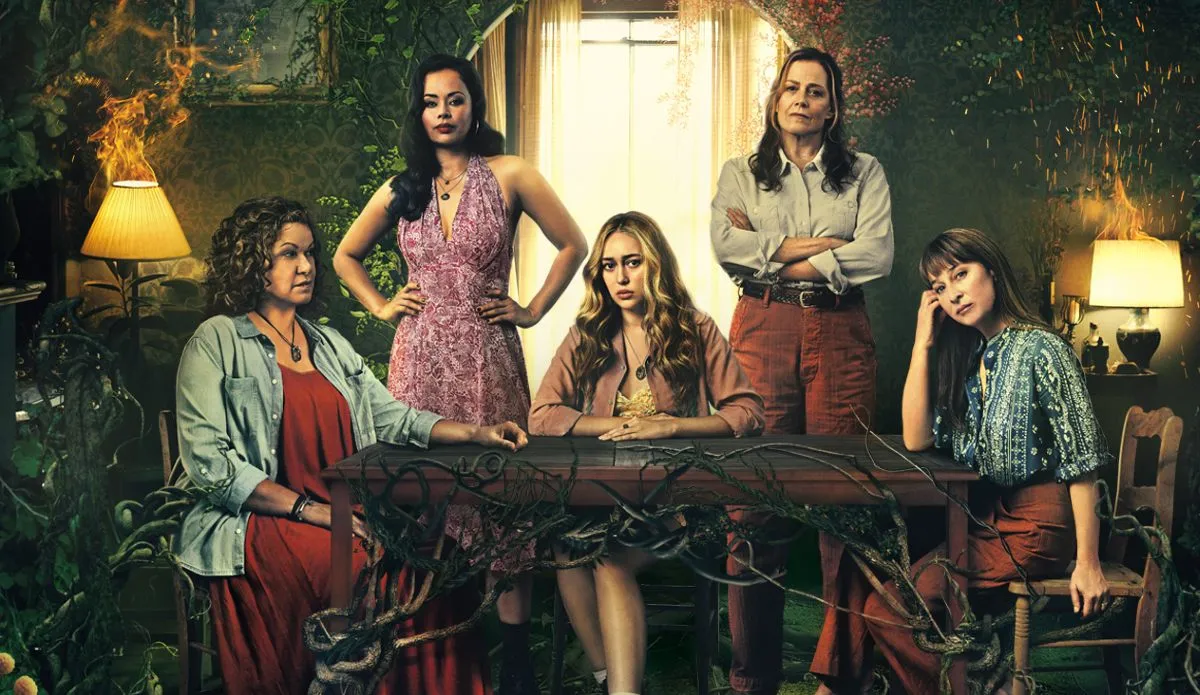Have you finished watching The Lost Flowers of Alice Hart? Good, then you are in the right place. Please pull up a chair. Prime’s newest series is a work of fiction, based on the novel of the same name by Holly Ringland. That being said, the show felt authentic to the extent that the acting, story, and cinematography made me almost forget I was watching a fictional show, not a documentary. So many aspects of The Lost Flowers of Alice Hart reverberated in my soul in both bad and good ways.
The seven-episode series can be difficult to watch, but not in the shocking ways we’ve become accustomed to with over-the-top shows like The Boys. The Lost Flowers of Alice Hart is something deeper and more painful. Each episode begins with a content warning about domestic violence. One episode, in particular, has an additional warning for the indigenous peoples of Australia, where the story unfolds. It’s a lot. Yet it’s also beautiful. The series is also full of hope, healing, and blossoming flowers. Let’s all take a deep cleansing breath and try to unpack the trauma of the Hart family.
The life of Alice Hart
This is very much the story of Alice Hart (played by Alyla Browne and Alycia Debnam-Carey) and how generational trauma shaped her life before she was born. Alice’s grandmother June (Sigourney Weaver) became pregnant during an act of violence. June kept her trauma to herself at the expense of her son, Clem, born of that act. She kept her distance from Clem as he grew and often faulted him for the crimes of other men. June owns and operates a large flower farm that doubles as a sanctuary for women who survive domestic violence. (The women are also referred to as “The Flowers.”)
The crimes of men haunt every woman on the farm, even the youngest. June and her partner, Twig (Leah Purcell), adopt a young girl whom they found wandering naked on their land. They never found out what her story was before coming to them, but you can guess it wasn’t great. Naming her Candy Blue, they raised her alongside Clem as his younger sister.
With no one talking about their trauma or seeking therapy, everything compounds. Clem betrays his family’s trust when he takes advantage of his adopted sister in a terrible way. Taking all the pain and anger he has experienced, Clem turns that on his mother and later his wife, Agnes. After Agnes gives birth to their daughter, Alice, things only escalate. Clem beats both of them to horrible degrees. I will say the show doesn’t go into overly graphic details showing the abuse, but it’s enough to make your gut clench if you’ve ever seen it in real life. When Alice is nine, a fire she accidentally causes kills her parents and (she thinks) her unborn brother. So she goes to live with June, Twig, Candy Blue (now an adult played by Frankie Adams), and the rest of the Flowers. Yet they keep her in the dark about so many things until she starts to unravel the secrets at the age of 20.
When Alice runs away from home, she is unprepared to deal with what kind of place the real world is. Although Alice knows how bad people can be, she has unresolved trauma and doesn’t know how that trickles through the rest of her life. Instead of dating the cute, sweet veterinarian guy, she responds to a mysterious, rugged man. Feeling a pull and zing with this other guy, I only felt alarm bells. And well, he turns out to be just like her dad. He’s sweet one moment, then beats her relentlessly while blaming her behavior for his actions. While hiding from him, she literally sees the ghost of her mother telling her to apologize to her abuser and let him into the house. This is exactly how patterns of abuse pass through generations. Luckily, Alice doesn’t give in and finds her way back home to confront all the family secrets.
But it’s also so much more than Alice
A side plot of the show centers around Twig, June’s partner. Twig’s backstory is briefly touched on before this, but as an indigenous woman, she has been through a lot at the hands of white men. Her children were taken from her because a white man accused her of neglect. When Alice leaves the flower farm, Twig goes to look for her. Twig tracks her down by her credit card use. She prints up flyers with Alice’s picture and puts them up around town.
On one of her outings, Twig encounters an older indigenous woman. After eating lunch together, Twig goes “with the Aunties out into the wild” to share a traditional meal under the stars. The women gather, share space, and cry out their pain. It only scratches the surface of what these women, and other indigenous peoples of Australia, have experienced. Their stories also deserve to be told and need more air time in common media like this.
Throughout The Lost Flowers of Alice Hart, the women communicate through the symbolism of flowers. They create beautiful bouquets packed with meaning and emotion. Really though, flowers aren’t enough and it takes until the end of the show for the women to talk about their feelings. Again, this show is the story of Alice Hart. However, her story echoes through the bones of those who have experienced trauma caused by the actions of others. She got to bloom at the end of her story because she found her voice. Hopefully, it will inspire survivors to share their stories and end the vicious cycle of violence that silence brings.
(featured image: Prime Studios)









Published: Sep 1, 2023 04:02 pm